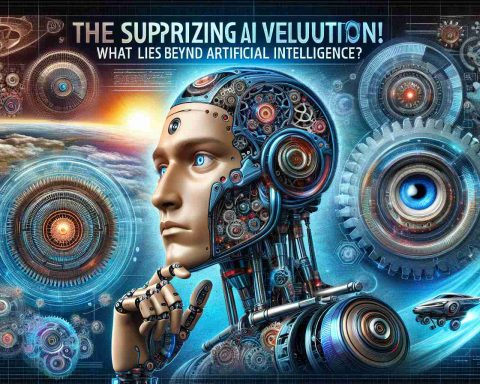Imagine a world where static photos come to life, no longer frozen in time, but capable of moving rhythmically as if infused with energy. The concept of “making a photo dance” isn’t just an artistic dream; it’s a burgeoning field in the realm of new technology that leverages advancements in artificial intelligence and augmented reality.
Animating the Inanimate
At the core of this revolutionary idea is the integration of AI algorithms that can predict and animate realistic movements from still images. These algorithms analyze a photo’s context, recognizing elements such as people, animals, or even objects, and generate plausible movement paths. The result is a photo that dances, turns, or waves, creating an immersive experience for the viewer.
Applications and Implications
Innovative uses for this technology are already being developed. Imagine digital picture frames showcasing family photos that gently sway or wave, offering a sense of presence and connection. Social media platforms are beginning to explore features where users can personalize their photos with whimsical animations, enhancing user engagement.
Challenges and Future Prospects
Despite its potential, achieving perfect lifelike movement remains challenging. The accuracy of these animations depends heavily on the system’s ability to understand context and apply human-like logic to movement. As technology progresses, the dream of seamlessly integrating dynamic pictures into everyday digital interactions inches closer to reality.
The notion of “making a photo dance” illustrates how technology continues to push the boundaries of what we consider possible, transforming personal and artistic expression in the digital age.
Will Dancing Photos Reshape Our Digital Legacy?
The idea of breathing life into static images holds transformative potential not only for personal expression but also for cultural and historical documentation. Imagine museum relics and historical archives that come to life, offering a more engaging way to learn about the past. But what does this leap in technology mean for the world at large, and specifically, how does it affect our collective digital legacy?
Enriching Cultural Narratives
By animating historical photographs, we can enhance storytelling and preserve cultural heritage in more compelling ways. Imagine ancient artifacts animated to reveal their stories or historical figures brought to life, providing deeper insight into their lives and times. This could lead to a more vivid understanding of history as animated scenes offer a broader context than static images ever could.
Privacy Concerns and Ethical Dilemmas
While the advantages are obvious, the technology raises important ethical questions: Should deceased individuals be animated without their consent? What happens when these animations distort history? Such concerns underscore the importance of developing ethical guidelines around the use of this technology. Unauthorized use and manipulation of images could potentially lead to misinformation, impacting how history is perceived.
Broadening Educational Horizons
On an educational front, this technology could amplify learning experiences by making educational content more interactive. Teachers could use animated presentations to capture students’ imaginations, transforming traditional texts and photos into lively and engaging narratives.
In essence, while animating photos offers exciting possibilities, it forces us to question the balance between innovation and privacy, and between entertainment and truth. As with all new technology, it will require thoughtful regulation and ethical considerations.
For further exploration into the ethical aspects of AI, visit AI Business.

















